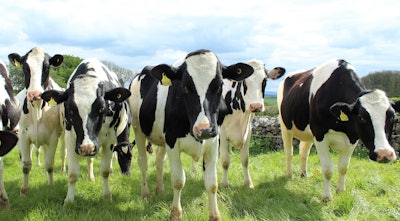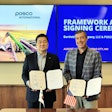
Aload of U.S.-bred Holstein heifers — 1,750 head valued at $4 million — will leave U.S. shores for Morocco in December 2020, the latest downstream benefit of a long-lasting partnership between the U.S. Grains Council (USGC) and COPAG, a Moroccan dairy cooperative.
This is the third time COPAG has imported animals from the United States since the feedlot was inaugurated. Including the upcoming shipment, COPAG has imported 5,400 U.S. dairy cattle with a total value of $14.7 million.
USGC has worked with COPAG leadership for more than 15 years. The organization is a 14,000 farmer-member cooperative with more than 85,000 Holstein cattle. Business operations have expanded beyond the original citrus and dairy operations to include dairy processing, beef production, beef processing and vegetable production.
USGC first signed a memorandum of understanding with the cooperative in 2003 to provide engineering and start-up support for an 11,000-head beef feedlot, the first of its kind in Africa. When the feedlot was officially inaugurated in 2005, a team from the USGC Board of Directors and sorghum sector attended.
Over the years, USGC also provided consultations for COPAG’s dairy operations and helped with the startup of the first private slaughterhouse in Morocco. COPAG also operated the only feed mill focused on producing feed concentrates for ruminants, using U.S. feed grains to ensure overall herd performance and maximum productivity.
In return for this support, COPAG granted USGC access to its facilities as a training center in Morocco for educating trade teams on the benefits of intensive production practices; highlighting the importance of feed concentrates for ruminants; and demonstrating the use of U.S. distiller’s dried grains with solubles (DDGS), steam-flaked corn and sorghum to regional feed millers. Teams from the United States, Spain, Morocco, Algeria, Tunisia, Egypt, Ethiopia and India have all participated in these training programs.
Beyond the training programs and technical exchange, COPAG is also a steady importer of U.S. coarse grains and co-products. In addition to U.S. dairy genetics valued at $960,000, COPAG has imported 830,000 metric tons of U.S. corn, soybeans, DDGS, corn gluten feed and soy hulls — valued at $190 million — over the past 10 years. The United States maintains a 100% market share for corn gluten feed and DDGS exports to Morocco.
USGC’s partnership with COPAG is part of overall market development efforts in Morocco to develop the technical capacity and capabilities of the country’s poultry and ruminant industries. USGC believes this growth will lead to continued new opportunities for U.S. feed grains to the region.
As groups like COPAG continue to modernize and be even more competitive, these industries pursue reliable suppliers of feed grains and corn co-products. In turn, this creates opportunities for the United States to regain feed market share in Morocco.
The return on USGC’s initial investment 15 years ago continues to yield results for U.S. exporters. This program highlights the importance of relationships forged over time, demonstrating how they create value for U.S. agriculture in many long-lasting and sometimes unexpected ways. ■
Kurt Shultz is the senior director of global strategies for the U.S. Grains Council, a non-profit organization that promotes the global use of U.S. barley, corn, sorghum and related products including ethanol and distiller’s dried grains with solubles (DDGS).

















